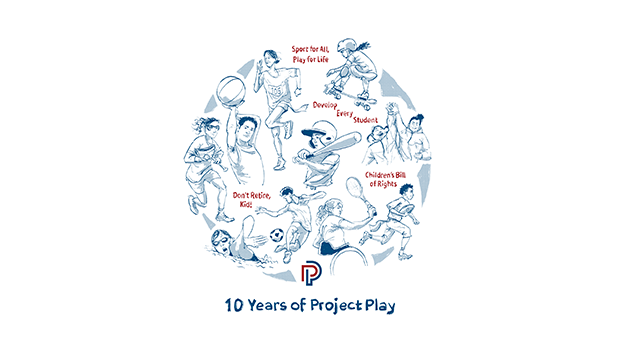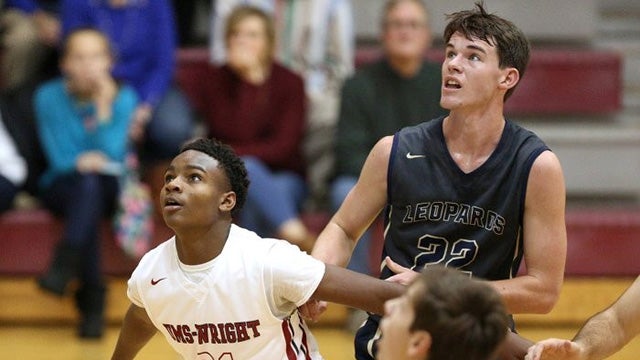The Aspen Institute Sports & Society Program, together with the University of Washington and King County Parks, analyzed the landscape of youth physical activity through sports, play and outdoor recreation in King County from January to June 2019. State of Play Seattle-King County offers a snapshot of how well adults are serving youth through sports, play and outdoor recreation, with attention to race, location and income-based disparities.
Findings for this report were guided by an advisory board of local leaders and obtained through individual interviews with stakeholders; focus-group discussions with youth and parents; youth, parent and coach surveys; existing reports; policy analyses; public data; and media accounts.
Some key findings in the report:
- Organized sport is exclusive, economically and culturally, leaving many King County youth on the sidelines. Youth who do not speak English at home are almost three times more likely to have never participated in organized sports or recreation than children who speak English at home. Youth of color are significantly less likely than white youth to have participated in an organized sport. Our survey of parents in King County suggests that kids are more likely to participate in organized sports if their parents make $75,000 or more, mirroring a trend seen nationally.
- Only 19% of youth in King County meet the 60 minutes of physical activity per day recommended by the Centers for Disease Control and Prevention (CDC). Girls (16%) are less likely to be sufficiently physically active than boys (22%). Physical activity declines as youth get older, with only 13% of 12th graders meeting the CDC recommendations. Eleven percent of youth who do not speak English at home meet the CDC recommendations compared with 20% of youth who do speak English at home.
- Infrastructure — like fields, facilities and transportation — cannot meet demand to support youth physical activity. Most of south King County has poor transit access to parks, reflective of both less green space and less well-connected transit networks. Use of Seattle’s lit, multipurpose fields has doubled in the last decade even as more have come on line.
- Youth in south King County have fewer playfields and parks in their neighborhoods, and access to them is more restrictive than in the rest of the region. Youth of color spend significantly less time at the parks near them than their white peers.
- Nontraditional programs and nonmainstream sports, like Ultimate frisbee, offer models for positive youth development. Ultimate is the third-most-played organized sport in the region, behind soccer and basketball.
- Youth tell us that walking and running are the top ways they are physically active; cycling and hiking are also in the top 10.
- Youth say that martial arts and boxing are the sports they most want to try. Surfing, lacrosse, parkour, fencing and rock climbing aren’t far behind.
- More King County youth play organized flag football (7%) than tackle (5%), and they are almost three times more likely to try flag than to try tackle. Nationally, flag has also surpassed tackle among kids ages 6 to 12.
Our recommendations offer ideas based on the unique characteristics of King County and the recommendations of the community advisory board. Several key recommendations are related to ongoing regional debates about policies and priorities, including transportation, land use, and education. Our major recommendation focuses on establishing schools as a hub for physical activity. As access to sport and recreation becomes more inequitable, schools offer a space where all youth can be served and participate.
Other solutions include creating an equity toolkit for sport and recreation providers; integrating access to parks and playfields into conversations about regional transportation improvements; creating a youth sports and recreation portal with a rating system; and launching a public health campaign aimed at increasing youth physical activity.
The University of Washington’s youth survey drives much of the analysis in this report. The survey was distributed to fifth- through 12th-grade students across the county — in public schools, private schools and after-school programs — and was taken by 1,038 youth.
Children, as the consumers of youth sports, carry a valuable voice that too often is not reflected in coaching and programming. When children have some measure of control over physical activity, they are more inclined to enjoy themselves and thus continue to move their bodies, becoming athletes for life. In King County, what youth most like about organized sports and recreation is having fun and playing with friends. Winning was not in the top five.
State of Play Seattle-King County is the Aspen Institute’s eighth overall community report. There is a county report on Mobile County, Alabama; a state report on Hawai’i; regional reports on Southeast Michigan, Western New York, and Greater Rochester and the Finger Lakes; and hyperlocal reports on Harlem and Baltimore. Stakeholders in those communities have taken actions based on the recommendations and are seeing results.
With a passionate sports culture and love of the outdoors, King County has the opportunity to take action and provide more equitable access to and higher quality of sport, physical activity and recreation opportunities for all children. This can be accomplished through a joint commitment — by schools, local government agencies, nonprofits and the business community — to the health and wellbeing of our next generation.

Read the full State of Play Seattle King County report. Learn more about Project Play at ProjectPlay.us.

